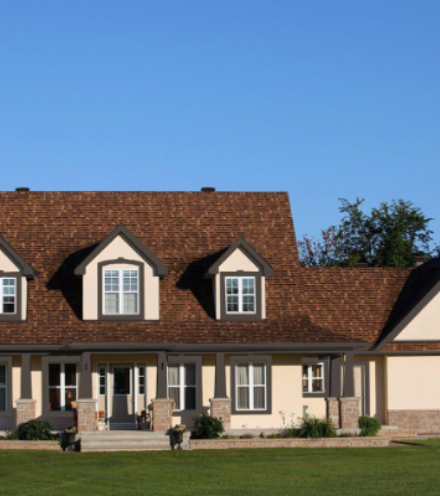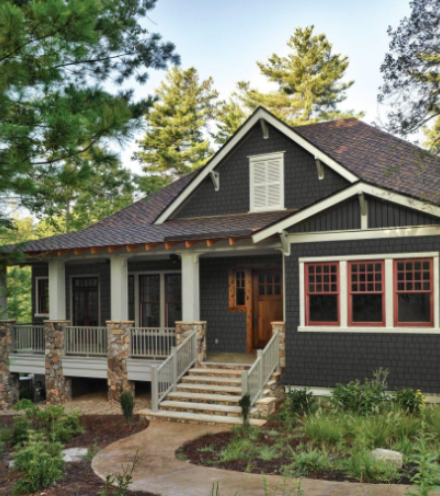
Lap siding is one of the most commonly installed siding types in the US. Technically, the term refers to most horizontal siding installations, with the term originating from the way that some types of planks overlap one another.
Types of Lap Siding
There are technically several types of lap siding, each with its own distinct appearance, and lap siding can come in many different materials. Understanding your siding can help you make the best decision when it comes to siding replacement.
Clapboard Siding
The first type of siding that was considered lap siding is clapboard. Clapboard is a horizontal siding where each piece is shaped like a wedge; thinner at the top and wide at the bottom. The pieces of siding overlap one another, with the shape helping to make an even profile. Clapboard is most popular around New England areas, but can be found in other areas as well.
Beaded Lap Siding
A beaded lap siding has a thicker bottom edge to it, or a “bead” at the bottom. This creates a more dynamic shadow where the top course overlaps the bottom. Beaded lap is much less common than other types, but can create a more decorative appearance.
Dutch Lap/Horizontal Lap Siding
Dutch lap vinyl siding is a common type of siding, which is also sometimes known as horizontal lap siding. The pieces are slightly concave, which creates a deeper reveal and shadow than clapboard siding. This type of siding was very inexpensive to produce and install when it was first introduced, which made it a popular choice
Shiplap Siding
Shiplap is a unique installation method for siding that overlaps at the top, but with very tight joints and tolerances. In a shiplap, the narrow edge of the above course will fit beneath the wider bottom edge of the next course, but so tightly it will appear that the siding is nearly flat, with very little reveal and almost no shadow cast.
Traditional Lap Siding
When most people think of lap siding today, they think of the traditional form, in which the top, narrow end of the siding is tucked under the wider bottom of the next course, but with a slight shadow or reveal. There is less of a bevel to the edge than you’ll see on clapboard, and less of a shadow than you’ll see on a Dutch lap. Unless you are after a specific style or request a different installation, such as shiplap or board-and-batten, a traditional lap is likely what you’ll find on your home.
Lap Siding Materials

Lap siding can be found in many different materials. It was traditionally made out of wood, but over time, as wood’s issues became more apparent, people began searching for materials to clad their homes with that was lower in maintenance and higher in durability.
Wood lap siding needs to be painted or stained to protect it from the elements. It’s susceptible to moisture issues such as rot, and may be susceptible to fungus and insects as well. The paint or stain also needs to be reapplied every few years to help the wood siding retain its appearance, and to help protect it from the elements.
Vinyl siding is also found in a lap style, which is sometimes considered a lower maintenance alternative to wood. Unfortunately, vinyl lap siding is usually made up of a few courses molded together, with no backing behind the thin plastic. This can lead to cracks if the vinyl is hit hard enough, or if the material is exposed to cold. It can also soften and melt in heat, so it’s not as durable or low maintenance as most homeowners would prefer. It cannot be installed in other patterns, so if you want a clean, shiplap installation, it usually isn’t possible.

A good solution to these issues is to use fiber cement lap siding. Fiber cement is more durable than wood or vinyl, and lower maintenance as well. It resists peeling, and chipping, and it is also flame, moisture, and insect resistant as well. It’s available in several widths, so the installation can be customized, and it can be installed in both traditional and shiplap installations, so you can get the look that you want more easily.

Fiber cement lap siding comes in a wide range of colors, and has coordinating trim and soffits, so you can complete the exterior of your home in style.
Get a Better Lap Siding

Lap siding is found on the majority of homes in the US. It’s attractive, versatile, and will complement most home styles. If you’re looking for a lower maintenance version of lap siding that can give you more versatile results, consider fiber cement lap siding for your next project.




